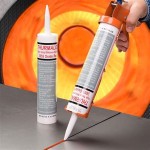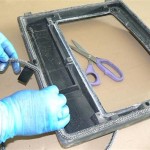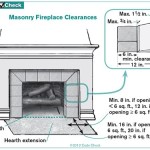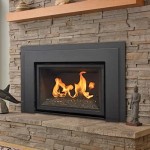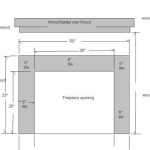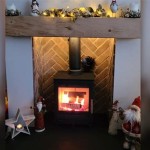Direct Vent Gas Fireplace Efficiency: Understanding Performance and Maximizing Savings
Direct vent gas fireplaces have become increasingly popular as a convenient and aesthetically pleasing heating option for homeowners. They offer the ambiance of a traditional fireplace without the mess and some of the inefficiencies associated with older wood-burning models. Crucially, understanding the efficiency of a direct vent gas fireplace is paramount for making informed decisions about home heating, energy consumption, and cost savings. This article will explore the factors influencing direct vent gas fireplace efficiency, providing insights into how these appliances function and how their performance can be optimized.
The term "efficiency" in the context of gas fireplaces refers to the percentage of fuel consumed that is converted into usable heat for the home. A higher efficiency rating signifies that a larger proportion of the gas burned is effectively warming the living space, rather than being lost through the venting system. Direct vent models are generally more efficient than other types of gas fireplaces, such as vent-free or natural vent designs, primarily due to their sealed combustion system and direct venting to the outside.
In contrast to older fireplace designs that draw air from inside the room for combustion, direct vent fireplaces employ a dual-pipe system. One pipe brings fresh air from outside directly into the firebox, while the other expels the exhaust gases back outside. This sealed system prevents the fireplace from drawing heated air from the room and sending it up the chimney, a significant source of heat loss in traditional fireplaces.
Understanding the Efficiency Metrics: AFUE and Thermal Efficiency
Two primary metrics are used to assess the efficiency of direct vent gas fireplaces: Annual Fuel Utilization Efficiency (AFUE) and Thermal Efficiency. While both provide insights into performance, they represent slightly different measurements.
AFUE (Annual Fuel Utilization Efficiency): This metric provides an estimate of the seasonal efficiency of the fireplace, taking into account losses during start-up, shut-down, and standby mode. It essentially projects how efficiently the fireplace will convert fuel into heat throughout a typical heating season. AFUE ratings are expressed as a percentage. For example, an AFUE of 80% indicates that 80% of the fuel consumed is converted into usable heat, while the remaining 20% is lost through the venting system or other inefficiencies.
Thermal Efficiency: This metric measures the efficiency of the fireplace during steady-state operation. It represents the percentage of fuel consumed that is converted into heat when the fireplace is running at a consistent level. Thermal efficiency ratings are typically higher than AFUE ratings because they do not account for losses during start-up and shut-down. While thermal efficiency provides valuable information, AFUE is generally considered a more comprehensive measure of overall performance because it reflects real-world usage patterns.
It's important to consult the manufacturer's specifications to determine the AFUE and thermal efficiency ratings of a specific direct vent gas fireplace model. These ratings are typically found on the energy guide label or in the product literature. Comparing the AFUE and thermal efficiency ratings of different models can help consumers choose a fireplace that offers optimal performance and cost savings.
Factors Influencing Direct Vent Gas Fireplace Efficiency
Several factors can affect the efficiency of a direct vent gas fireplace. Understanding these factors can help homeowners make informed decisions about fireplace selection, installation, and operation, leading to improved performance and reduced energy consumption.
Burner Design and Technology: The design of the burner plays a crucial role in combustion efficiency. Advanced burner designs, such as those with multiple ports or optimized air-fuel mixtures, can improve combustion and reduce emissions. Some fireplaces incorporate modulating burners that automatically adjust the flame height and heat output based on the room's temperature, leading to more efficient fuel consumption. Additionally, new technologies such as electronic ignition systems, which eliminate the need for a continuously burning pilot light, also contribute to improved efficiency.
Firebox Construction and Insulation: The materials used in the firebox construction and the level of insulation significantly impact heat retention. Fireboxes constructed from heavy-duty materials like cast iron or thick steel tend to retain heat more effectively than those made from thinner materials. Proper insulation around the firebox helps to minimize heat loss through the walls and surrounding surfaces, directing more heat into the living space. Some high-efficiency models include ceramic glass, which radiates heat more effectively than standard glass.
Venting System Design and Installation: The design and installation of the venting system are critical for ensuring proper combustion and efficient exhaust removal. Direct vent fireplaces require a specific type of venting that is designed to draw in fresh air and expel exhaust gases. The length and configuration of the vent run can affect the fireplace's performance. Incorrectly installed venting can lead to reduced efficiency, backdrafting, and potentially dangerous carbon monoxide build-up. It's important to adhere strictly to the manufacturer's installation instructions and to have the venting system inspected by a qualified technician.
Gas Type and Pressure: Direct vent fireplaces are designed to operate with either natural gas or propane. The type of gas used and the gas pressure can influence the fireplace's efficiency. It's crucial to ensure that the fireplace is properly configured for the specific gas type and that the gas pressure is within the manufacturer's recommended range. Operating the fireplace with the wrong gas type or incorrect pressure can result in incomplete combustion, reduced efficiency, and potential safety hazards.
Room Size and Insulation: The size of the room and the level of insulation will influence how efficiently a direct vent gas fireplace heats the space. A fireplace that is too large for the room may cycle on and off frequently, leading to inefficient operation. Conversely, a fireplace that is too small may struggle to maintain a comfortable temperature. Proper insulation in the walls, ceiling, and floor helps to minimize heat loss and reduce the demand on the fireplace.
Strategies for Maximizing Direct Vent Gas Fireplace Efficiency
Homeowners can implement several strategies to maximize the efficiency of their direct vent gas fireplace and reduce energy consumption.
Regular Maintenance and Cleaning: Regular maintenance is crucial for ensuring the fireplace's optimal performance. This includes cleaning the burner assembly, inspecting the venting system, and checking for any signs of damage or wear. A qualified technician should perform an annual inspection to ensure that all components are functioning properly and that the venting system is clear of obstructions. Cleaning the glass front of the fireplace regularly will also improve heat radiation.
Using a Programmable Thermostat: Installing a programmable thermostat can help to optimize the fireplace's operation and reduce energy consumption. A programmable thermostat allows homeowners to set different temperature settings for different times of the day, ensuring that the fireplace is only running when needed. This can significantly reduce fuel consumption compared to manually adjusting the thermostat or leaving the fireplace running continuously.
Optimizing Room Insulation: Improving the insulation in the room where the fireplace is located can significantly reduce heat loss and increase the efficiency of the fireplace. This includes sealing air leaks around windows and doors, adding insulation to the walls and ceiling, and insulating the floor. By minimizing heat loss, the fireplace will require less energy to maintain a comfortable temperature.
Proper Venting System Maintenance: Regularly inspect the venting system for any signs of damage, corrosion, or obstructions. Clear any debris or obstructions that may be blocking the vent. Ensure that the vent is properly sealed to prevent air leaks. If the venting system is damaged or corroded, have it repaired or replaced by a qualified technician.
Strategic Use of Ceiling Fans: Ceiling fans can help to circulate warm air throughout the room, improving the fireplace's overall heating effectiveness. By running the ceiling fan on low speed in a clockwise direction, warm air that rises to the ceiling can be pushed back down into the living space. This helps to distribute heat more evenly and reduce temperature stratification.
Considering Zone Heating: Direct vent gas fireplaces are particularly well-suited for zone heating, which involves heating only the rooms that are being used. By using the fireplace to heat a specific zone in the home, homeowners can avoid heating the entire house, which can significantly reduce energy consumption. This is especially effective in homes with open floor plans where the fireplace can heat a large living space.
When selecting a direct vent gas fireplace, consumers should carefully consider the efficiency ratings, burner design, firebox construction, and venting system requirements. Choosing a model with a high AFUE rating and incorporating energy-saving strategies can lead to significant cost savings and reduced environmental impact. Homeowners should also consult with qualified professionals to ensure proper installation and maintenance, maximizing the fireplace’s efficiency and ensuring safe operation.

How To Find The Most Efficient Direct Vent Gas Fireplace For Your Next Project

Everything You Need To Know About Gas Fireplaces Energy Trust Of Oregon

What Are The Best Ways To Vent A Gas Fireplace Zoroast

What Is A Direct Vent Gas Fireplace And How Efficient Are They

Freestanding High Efficiency Direct Vent Gas Fireplaces Inserts Stoves Godby Hearth And Home

Direct Vent Vs Natural Www Mygasfireplacerepair Com
Gas Fireplace Venting Explained Heat Glo

Gas Fireplace Faq Fireplaces Direct Learning Center

Napoleon B46ntre Ascent Series Electronic Ignition Direct Vent Gas Fireplace

Freestanding High Efficiency Direct Vent Gas Fireplaces Inserts Stoves Fireplace Valleyresorts Co
Related Posts

